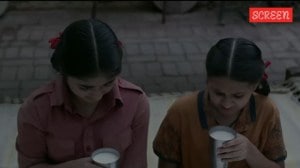Tears for the onion
There's something truly disquieting and peculiarly apt about the twin tragedies unfolding before our very eyes: the declining rupee and the ...

There’s something truly disquieting and peculiarly apt about the twin tragedies unfolding before our very eyes: the declining rupee and the disappearing onion. These, after all, are two institutions that have bound this nation together, its towns and its villages, it rich and its poor, its heart and its stomach.
It’s not just the rupee’s downward spiral in dollar terms that rankles. It is its worth vis-a-vis that humble vegetable from the liliaceous family, composed of concentric layers of translucent skin that wrap each other like an enigma does a mystery. Three months ago, a rupee could buy you at least two onions, today you should count yourself fortunate if it can procure for you one-quarter of a goodly-sized bulb. It’s enough to make those stoic Ashoka lions etched on the face of every rupee coin roar in despair.
The thing about the onion is that it had become so much a part of our lives that we took it for granted. There they lay in glorious, if dusty, profusion lighting up the dullest vegetable market in a pink glow, along with the potato, its stodgy culinary collaborator in many a dish. One, properly jacketed, the other clad in the most scandalously diaphanous of garments, little else than rose-tinted parchment in fact.
For years we casually pointed to one pile and then the other, saying one kilo of each, shukriya. It was the very stuff of life,guaranteed to lend a certain grandeur to the most basic of meals — a roti with a raw onion,some rice and a roughly-ground onion chutney. The carrot, the bitter gourd, and the cabbage appeared and disappeared with the seasons, but that old faithful, the onion, came home in every shopping bag every day of the year.
Like breathing air or drinking water, we sliced and chopped, minced and diced, grated and ground the stuff, weeping through it all as if it was a four-hanky soap opera. Ah, the tears we shed over this vegetable, rich in vitamins, iron and an elusive astringent that made the encircling air sing. For years we told the chhole-bature man at the street corner to sprinkle a little more onion on the spicy fare he dished out to us in his leaf katoris. For years, we reached out in restaurants for those rotund fellows in glass bowls, all of them pickled pink and crunchy to the bite and demanded our plates of sliced pyaaz-nimbu as essential accompaniments to every meal, but especially to kababs.
Of course, it wasn’t always like this. The country’s love affair with the onion was clearly a latter-day development. The early Vedas didn’t mention the bulb, the later ones considered it forbidden food. We have it on the excellent authority of the Chinese traveller, Fa Xian, that throughout the country he didn’t come across even one Indian eating onion or garlic. When Xuan Zang came around a couple of centuries later things obviously hadn’t changed all that much. Wrote he: “Onions and garlic are little known and few people eat them; if anyone used them for food they are expelled beyond the walls of the town…” They certainly knew how to guard themselves against onion breath in those days! But at some magical moment of time, the country surrendered to the acerbic charms of this vegetable. It rode in on the breath of the invader perhaps and, before we knew it, was roasting nicely on the kadhai in a spoonful of oil, providing the basic masala of an Indian’s existence.
Over time it had insidiously infiltrated almost every dish in the country, from the erulli gojju of Karnataka or the vengayam sambar of Tamil Nadu to the missi-rotis of Punjab, which have as many onion pieces in its dough as a traditional Christmas cake has currants. Without it, how could the famous khandha besan, or Bombay Chutney, have had a local habitation and a name? Only this city of a people in perpetual hurry could have concocted an accompaniment of this kind, perfect with puris, great with rotis, and nutritious to boot. Where would the pilaus of the country have got its delicate brown tints and its heavenly aromas from? Remember what cookery queens like Tarla Dalal and Mrs K.M. Mathew had always emphasised fry the onions till golden brown, that is the secret. Yes, and what would have become of one of the country’s most popular tea-time snacks, whether in Dibrugarh or Dalhousie, if there were no onions in the market? Onion bhajiyas — rings of onion dipped in a besan batter and dropped, hissing in protest, into hot oil?
Our netas of course have divined the peculiar alchemy wrought by this vegetable on the nation’s collective psyche. Indira Gandhi powered her famous 1980 victory on its rising price. This time, too, there will be those seeking to do this. But the onion demands the poet, not the politician, to mourn its enigmatic absence. A nation that does not know its onions is, well and truly, a nation in decline.





- 01
- 02
- 03
- 04
- 05


























